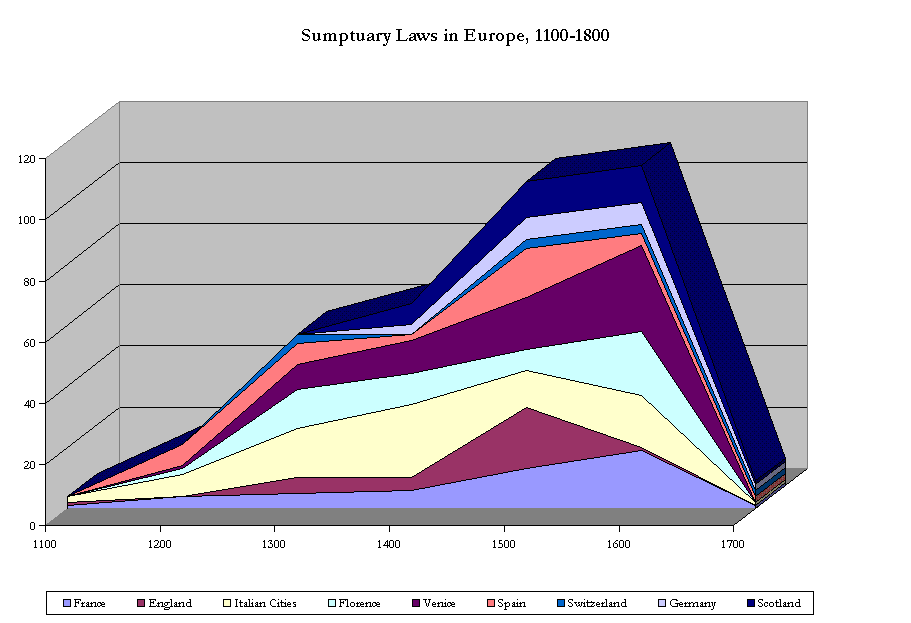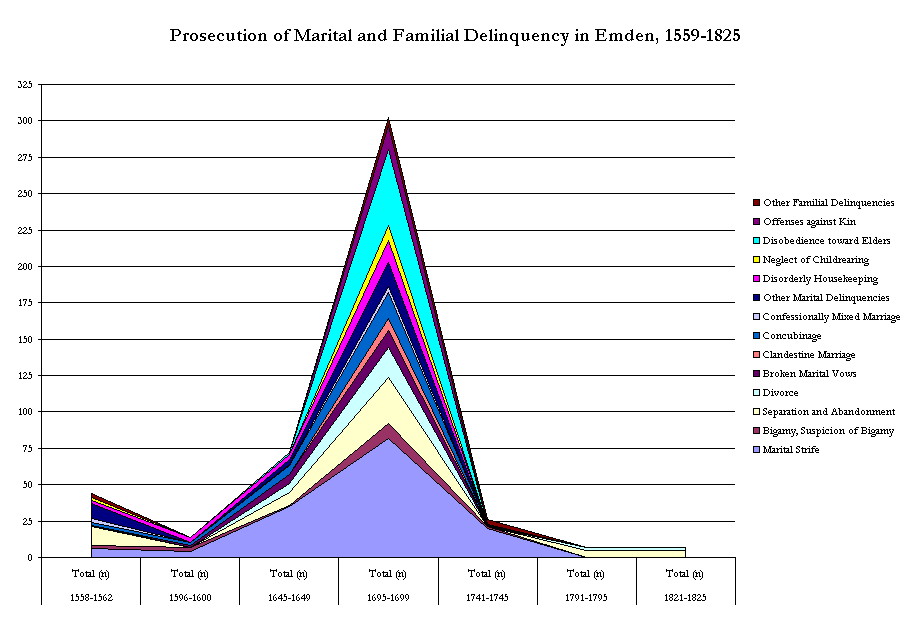
Source: Alan Hunt, Governance of the Consuming Passions: A History of Sumptuary Law (New York: St. Martins, 1996).
Social Disciplining in Early Modern Europe
The following two charts give a general and focused look at the pattern of moral legislation in early modern Europe. The first of these charts describes the sheer volume of legislation regulating clothing and consumption ("sumptuary laws"), broken down by country, beginning in the twelfth century and extending through the eighteenth. As this chart clearly shows, the period of when regulating the passions was most intense lay between 1400 and 1700, albeit with considerable regional variations. Italian cities, for example, were more energetic in the fifteenth century, whereas north of the Alps the seventeenth century proved to be the intensive period of sumptuary regulation.

Source: Alan Hunt, Governance of the Consuming Passions:
A History of Sumptuary Law (New York: St. Martins, 1996).
The second chart describes the content and intensity of prosecution
for sexual and marital deliquency by the Calvinist consistory in the North
Sea harbor-town of Emden between 1559 and 1825. Each set of data points
includes the sum of prosecutions in each category for a five year sample
period, for example, between 1645 and 1649 (inclusive). The data show,
first, a sharp increase in prosecutorial activity during the seventeenth
century, especially the latter half. This increase is traceable in almost
every category of prosecution. Just as important, second, is the
sharp drop-off in this activity during the eighteenth century: by the end
of the century, prosecutions have all but ceased; those few which remain
are limited to cases of divorce and abandonment.

Source: Heinz Schilling, Civic Calvinism in northwestern
Germany and the Netherlands: Sixteenth to Nineteenth Centuries (Kirksville:
Sixteenth Century Journal Publishers, 1991).
Return to
"Witches in Europe" Homepage